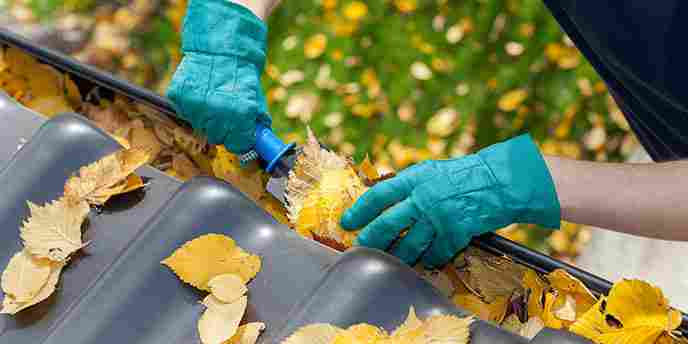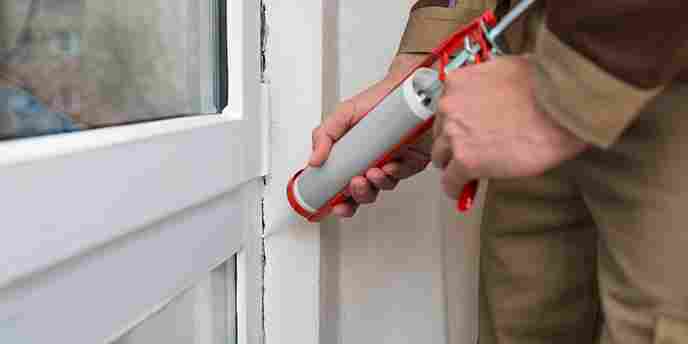The Complete Home Winterization Checklist
As the days grow shorter, and the temperature starts to fall, you’re going to want to get your home ready for the icy embrace of winter. Winterizing your home can be done for little to no money and help you save big on heating costs.
13 Ways to Prepare Your Home for Winter
Is your home ready for winter? Even though you probably want to soak up every last fall day, it’s important to take some time to prepare your home for winter. Use this checklist to make sure you’re ready for another round of the cold and snow.
“The top areas of your house that can lose heat in the winter months are around your windows and doors, in attics, basements and crawlspaces where the openings are not sealed and from fireplaces with flues that do not have the damper closed when not in use.”
 “The top areas of your house that can lose heat in the winter months are around your windows and doors, in attics, basements and crawlspaces where the openings are not sealed and from fireplaces with flues that do not have the damper closed when not in use.”
“The top areas of your house that can lose heat in the winter months are around your windows and doors, in attics, basements and crawlspaces where the openings are not sealed and from fireplaces with flues that do not have the damper closed when not in use.”Michael Hidalgo Grimes | State Farm

1. Clean Out Your Gutters
Clearing out your gutters and downspouts should usually be done a few times a year, depending on how many trees you have. But emptying them before the freezing temperatures set in is an important first step to winterizing your home. If your gutters seem to fill up with debris quickly, try installing leaf guards to keep them cleaner longer.
2. Assess Your Roof
Roof maintenance is best done before the cold sets in, and it’s a crucial part of preparing your home for winter. The best way to determine your roof’s integrity is to do a visual inspection. You will want to look for sections of the roof where the shingles are cracking, bending, or just plain missing. Loose screws and rusted panels should also be investigated to see if there are some potential leaks in the making. Review our roof maintenance checklist to ensure your roof is ready to withstand the winter months.
3. Protect Your Wood Deck
Sweep your deck clean of fallen leaves and other dirt and debris. If you didn’t apply a fresh coat of sealer in the spring, now may be the time to do that before the snow starts falling. You can lay a large tarp down to protect your wood or make sure to be diligent about using a plastic shovel for snow removal. Focusing on maintaining your deck year-round can help preserve its lifespan.
4. Flush Your Sprinklers
As you winterproof your home, pay special attention to outdoor water sources. If your lawn has a sprinkler system, it’s important to shut the water off before the ground freezes. You will also want to flush the existing water out of the pipes. To do that, open up the manual valve and flip on the system or, alternatively, use a compressor to blow the remaining water out of the system.
5. Check Your Snowblower
Don’t wait for the first snowfall to get your snow removal equipment in order. If you haven’t run your snowblower in a while, you’ll probably want to change the motor oil, spark plug and air filter before firing it up. Once that basic maintenance is out of the way, turn it on to ensure that everything is running smoothly. You should also lubricate the chute, levers and linkages throughout the machine so that everything turns easily once you’re removing snow.
6. Bring in Outdoor Plants, Furniture and Grill
Before the freezing weather hits, take inventory of all your outdoor accessories and plants. Debug and bring in your plants before the first frost hits, as this can cause them to drop their leaves. Clean all of your outdoor furniture and store in your garage or shed.
Any yard equipment you used during the summer should be cleaned up and stored in a dry place when preparing for winter. For your garden hose, disconnect it from your faucet and put it away. For mowers, you’ll want to scrape off any grass that is caked onto the blades. This can be done with a putty knife or wire brush. You should also take this time to change the oil, air filter and spark plug so you’re prepared for when spring rolls around.

7. Seal Gaps Around Your Doors and Windows
An important goal of winterizing your home is to keep your heating bills down and make sure your home is blocking out the cold air effectively. A great way to do this is to add weather stripping to your doors and caulk any window gaps. To prevent a draft from sneaking in, make sure all your windows stay locked. It may be time to replace your windows if your sashes aren’t meeting and your inner lock isn’t working.
8. Protect Your Pipes
Unheated interior spaces like your garage, attic or basement are most at risk for frozen pipes. Use pipe insulation liberally on any of your exposed pipes in the vulnerable areas of your house. Other ways to protect your pipes from freezing are to keep your garage closed as much as possible and even when you aren’t home, and don’t let the temperature of your house fall under 55 degrees Fahrenheit.
“Frozen pipes are the most common winter loss claim. We also see a lot of water damage from ice dams and space heater fires. These sudden and accidental damages are covered by our standard homeowners policy, but make sure to check with your insurance agent to see what types of winter damages are covered so you can prepare for emergencies.” Michael Hidalgo Grimes | State Farm
9. Clean Your Chimney and Check Fireplace Flue
After giving it the summer off, having your chimney inspected and cleaned is important for fire safety. Hire a local professional for a certified fireplace and chimney inspection and cleaning before the winter hits. An inspection will determine if there has been any buildup through the off-seasons and test your flue for a tight seal when closed.
10. Test-Run Your Heating System and Replace Filter
Furnace filters should be changed at least every three months, though some experts recommend changing them as frequently as once a month. The best thing for your furnace is to call an HVAC professional to come out and inspect it for you to make sure everything is operational. During their inspection, they’ll clean the furnace and change the filter for you. It’s also worth paying a little more to have them clean out your ducts as well.
11. Cover Your Water Heater
To stop your hot water heater from losing heat as quickly, you can purchase a water heater insulation blanket. These will only run you about $20-$25 from your local home improvement store and save you some cash on your heating bill.
12. Install a Programmable Thermostat
According to Energy Star , using a smart or programmable thermostat will save the average consumer more than 8% of their heating and cooling energy, amounting to around $50 annually. These new thermostats will also allow you to customize the temperature of your home based on your personal preferences. Many brands have an app for your phone so you can control your thermostat remotely or without ever leaving your bed.
13. Change Batteries and Test Smoke Detectors
Winter is the perfect time to crank the heat, light a fire and make some soup on the stove – but all these things also make this the peak season for home fires and carbon monoxide poisoning. Change the batteries in smoke and carbon monoxide detectors and test them to make sure they are working properly.
Keep Busy When It’s Cold Outside
Now that the inside and outside of your home is fully prepared for winter, here are some indoor projects you can work on until the weather warms back up:
Your comment